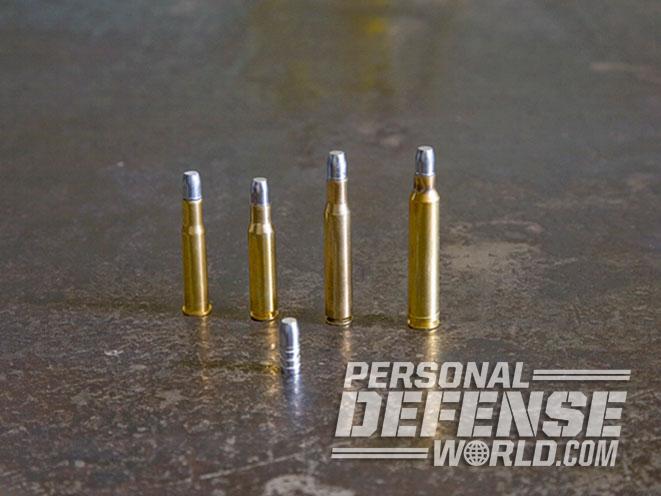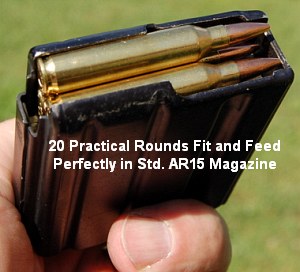There isn’t one shooter who hasn’t felt the pinch about ammunition scarcity and costs. Handloading supplies are the same, but we have more control over one crucial component: bullets. Do you want to feed your favorite rifle in a cost-effective manner? Learn how to cast bullets, and you’ll be on your way stocking up on rounds after round!
I started casting bullets almost 40 years ago. It is possible to get started with minimal equipment. I used an old iron pot and a Coleman stove to melt lead when I first started casting. You can make bullets that are very useful by adding a dipper to the mix and a mold. To save time and money, add more tools to your casting kit as your skill level increases and your budget permits.
How to Cast Bullets at Your Home
Bullet Casting Preparation
Safety First
Before we get into the details, it is important to understand some safety rules. Casting can be done at temperatures up to 700 degrees Fahrenheit. There is always a risk of being severely burned.
You will need:
Eye protection–the better the more
Protect your body with all-cotton clothing – synthetic clothing can cause skin to scald.
Protection against the harmful fumes from melting lead Casting outdoors is best, but if that’s not possible, a fan blowing towards the window from your garage or shop can be sufficient.
Clean supply of lead
Thermometer. A thermometer is essential to ensure that you have reached the correct casting temperature for your bullets. Each lead alloy has its own optimal casting temperature.
Obtaining Clean Lead
It is becoming more difficult to find clean lead. It’s becoming more difficult to find clean lead. Wheel weights are a common source, and a good one, provided you know their chemical makeup. It is not a good idea to use lead from wet batteries. These lead plates often contain arsenic and calcium in the plate alloy. The ammonia analogues arsine or stibine form when calcium and arsenic come in contact with hydrogen from the normal chemical reaction in the batteries. These heavy gases were once used in chemical warfare almost a century ago. You can die from very small amounts of either gas, so it’s not worth recycling car batteries for bullets.
RELATED STORY 9 Handloading Tips to Get Maximum Performance from Your AR
Rifles are more likely to fire their bullets at higher velocity than handguns so the rifles’ lead alloys must be stronger. You want it to score around 15 on the Brinnell hardness (BHN) and be able go up to approximately 2,000 fps. A harder alloy such as linotype is preferred between 2,000 and 3000 fps.
Many bullet casters add a copper gas check to their bullets. This is a small cup of copper that is crimped to its base to reduce leading and make it more powerful. Gas checks can’t be added to any cast bullet. To allow the gas check installation without causing damage to the bullet, the bullet design must be adjusted. Gas checks are, to be honest, more trouble than they offer. This is just my personal prejudice. I am able to do this because I don’t try to make my cast-bullet loads super-fast magnums.
To maintain consistency, most bullet casters melt their lead into a homogenous alloy and then cast the alloy into 1-pound ingots. This produces bullets with identical weight and hardness, which are critical attributes for accuracy.
Designing Your Bullets
For example, if you want to make hunting bullets, you must first address the overall design. Heavy-for-caliber bullets that have a large, flat meplat are more likely to deliver the best terminal performance. Hunting bullets are typically made from harder alloys to allow them to be driven faster. However, the harder alloys can’t be relied upon to expand or rivet like jacketed bullets. A large, flat meplat transfers more energy than a pointed or round-nose bullet. Some casters heat-treat hunting bullets to cause them to deform in animal tissue. But that is another topic.
RELATED STORY : The Case For Cartridges
Many shooters slug their barrels prior to purchasing a mold or sizing die. To slug a bore use a soft lead round ball slightly larger that the bore. Fishing sinkers work well as a substitute. Apply a generous amount gun oil to the ball and tap it into the barrel using a wooden rod. Give it a quick rap to make sure it fills the bore. Then tap it through the barrel. Make sure the barrel is landed on a soft rag to prevent it from bending as it exits. The diameter of the groove is determined by measuring the distance from the high point to the micrometer. For the best accuracy, your cast bullets should have that diameter or 0.001 inches more. If the as-cast diameter matches your bore, then you can simply lubricate it and load it.
Lubricating Bullets
If you want accuracy and the bullets not to lead the barrel, all lead bullets require lubrication. Although commercial lubricants are readily available, many casters prefer to make their own. There are many bullet lubricants recipes. Each one is lauded by its creator as the best.
RELATED STORY : The Pros and Cons of Powder Measures
Pan lubrication is the most straightforward method of lubricating bullets. As the name suggests, heat some bullet lube in a pan. It can be messy to pull the bullets from the pan so many people who use this method of lubrication use a wad punt to remove the bullets.
Some bullet molds won’t allow you to make bullets the right diameter. This is when you have to size them. A lubrisizer is a tool that sizes and lubricates bullets using a specific die. This is the best way to go. Lyman and RCBS are two of the most well-known lubrisizers.
Pre-Bullet Casting Notification
Do not attempt to use jacketed-bullet-loading data with cast bullets. Hodgdon has some loading data for cast bullets. Lyman has a Cast Bullet Handbook, which should be kept on every handloader’s bench.
Cast bullet shooting can be addictive because you can get more shots for your dollar and cast bullets will satisfy more than 90% of your shooting. Cast bullets could be the right choice if you want to get more bang per buck. Continue reading
Are you still having trouble finding what you were looking?
Search
Personal Defense World’s first article was How to Cast Bullets

















